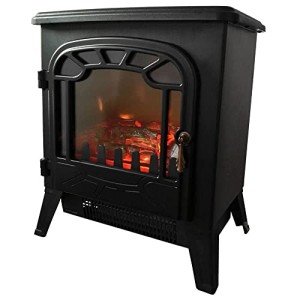The Fireplace: A Warm Embrace of Tradition and Comfort
Fireplaces have actually been an essential part of human habitation for centuries, serving as a source of warmth, a meeting place, and a symbol of comfort. While the modern versions may vary incredibly from their ancient forefathers, the appeal of a fireplace endures. This short article explores the various aspects of fireplaces, including their history, function, types, and upkeep, while likewise resolving often asked concerns.
The Evolution of Fireplaces
Fireplaces date back to ancient times when open flames were used for cooking, heating, and security from wildlife. Over the centuries, fireplaces progressed from easy fire pits to the sophisticated renditions we see today. Here is a quick timeline of their advancement:
- Prehistoric Era: Cavemen used open flames for heat and cooking. Best Fireplaces UK and smoke often blew into homes.
- Middle Ages: Stone and brick fireplaces ended up being common in homes and castles, incorporating chimneys to carry smoke outside.
- Renaissance: Elaborately created mantels emerged, and fireplaces ended up being centers of social interaction.
- Industrial Revolution: Innovations in heating products caused a variety of designs and performances.
- Modern Era: The development of natural gas, electric, and bioethanol fireplaces supplied cleaner alternatives to traditional wood-burning units.
Table 1: The Evolution of Fireplaces
| Era | Qualities |
|---|---|
| Ancient Era | Open flames for warmth and cooking |
| Middle Ages | Stone and brick structures with early chimneys |
| Renaissance | Elaborate mantels, social centers |
| Industrial Revolution | Diverse designs, development of new materials |
| Modern Era | Gas, electric, and bioethanol choices |
The Purpose of a Fireplace
Fireplaces serve dual purposes: they offer physical warmth and develop a psychological environment. Homeowners typically collect around the fireplace to bond, share stories, and delight in a cozy setting. The radiance of a fire can be calming, adding to a sense of relaxation and intimacy. Beyond individual pleasure, fireplaces likewise offer functional benefits, consisting of:
- Home Heating: Effective heat source, especially in cooler environments.
- Increased Home Value: A properly designed fireplace can enhance the aesthetic worth of a home.
- Emergency Heating: In case of power failures, wood-burning fireplaces can serve as a vital heat source.
- Aesthetic Appeal: A centerpiece that adds to interior decor.
Types of Fireplaces
Today, fireplaces are available in various styles and fuel types, accommodating a diverse variety of preferences and settings. Here are some typical types:
Wood-Burning Fireplaces:
- Traditional fire pits
- Traditional masonry fireplaces
- Require substantial upkeep and chimney upkeep
Gas Fireplaces:
- Available in both direct vent and ventless ranges
- Much easier to utilize and keep than wood-burning fireplaces
- Offer instantaneous heat with a flick of a switch
Electric Fireplaces:
- Offer associated heat sources without genuine flames
- Frequently designed to imitate traditional fireplaces
- Ideal for smaller sized areas and homes without a chimney
Bioethanol Fireplaces:
- Use bioethanol fuel, supplying a sustainable option
- Require no ventilation and can be put anywhere
- Safe and easy to maintain
Table 2: Types of Fireplaces
| Type | Fuel Source | Functions | Upkeep Requirements |
|---|---|---|---|
| Wood-Burning | Wood | High ambiance, heat source | Regular chimney cleaning |
| Gas | Natural gas or propane | Instantaneous heat | Very little, periodic servicing |
| Electric | Electrical power | Easy setup | Extremely low maintenance |
| Bioethanol | Bioethanol fuel | Ventless, portable | Low, generally cleaning |
Maintenance and Safety Considerations
Owning a fireplace involves certain obligations, specifically concerning its safe operation and long-lasting upkeep. Here are very important maintenance suggestions and safety standards:
Maintenance Tips:
- Annual Inspection: Always have your chimney and fireplace examined a minimum of as soon as a year by a qualified specialist.
- Routine Cleaning: Clean out ashes and particles after each usage, and make sure the flue is open before starting a fire.
- Look for Cracks: Inspect masonry for fractures or damage to avoid structural issues.
- Usage Proper Fuel: Only use dry, experienced wood for wood-burning fireplaces; do not burn treated wood.
Safety Guidelines:
- Install Smoke Detectors: Ensure smoke alarm are practical, evaluating them regular monthly and replacing batteries as needed.
- Keep a Fire Extinguisher: Have one nearby, even if a fireplace is utilized rarely.
- Supervise Flames: Never leave a fire unattended, and make sure children and animals are kept an eye on around the fireplace.
Often Asked Questions (FAQs)
1. How can I decrease smoke from a wood-burning fireplace?
To decrease smoke, use dry, experienced wood, and make sure that your chimney is tidy and unobstructed.
2. Is it safe to utilize gas fireplaces throughout a gas leakage?
Never ever use a gas fireplace throughout a gas leakage. Right away leave the area and contact gas services for help.
3. Can I set up an electric fireplace myself?
Electric fireplaces are normally simple to install, but it is suggested to seek advice from professionals to make sure security and compliance with regional building regulations.
4. What is the very best type of fireplace for small areas?
Electric fireplaces or bioethanol designs are typically best for small spaces, as they do not require substantial ventilation or structural adjustments.
Fireplaces have transcended their initial function of providing heat to end up being cherished aspects of home style and domesticity. They evoke memories of heat, events, and togetherness while providing practical advantages that improve modern living. By understanding the various types of fireplaces, their maintenance, and security practices, house owners can take pleasure in the ageless appeal of this precious feature for generations to come.

